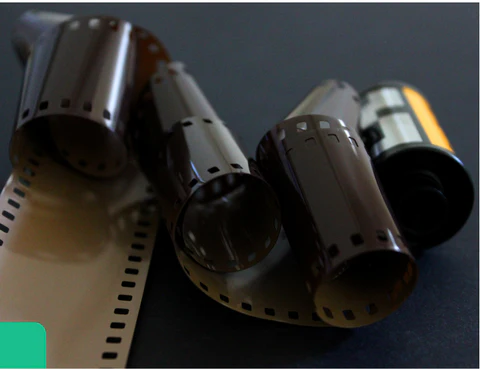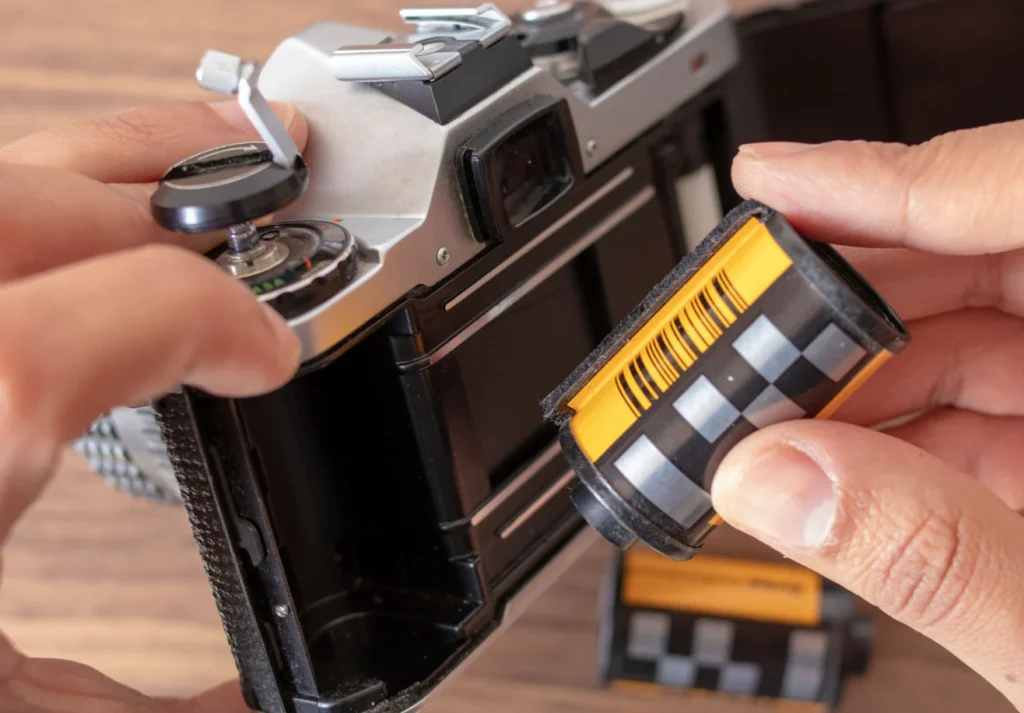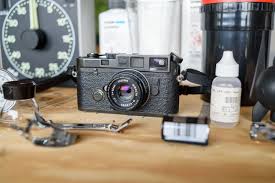How Long Do Film Last in a Film Camera – The Ultimate Tips for Photographers!
Film longevity varies by type: color negative film lasts 3 to 5 years, slide film can last over 10 years, and black and white film typically lasts 3 to 5 years.
In this comprehensive guide, we’ll explore the factors that affect film longevity, the best storage practices, and tips for getting the most out of your film.
Understanding Film Lifespan:

Film Type Matters:
The lifespan of film can vary significantly based on its type. Below are some insights into different film types and their longevity:
- Color Negative Film: This is the most common type of film used by photographers today. When stored properly, it typically lasts about 3 to 5 years. However, some manufacturers suggest that if kept in optimal conditions, it might perform well for longer periods.
- Color Reversal (Slide) Film: Known for its vibrant colours and sharp details, slide film can last 10 years or more when stored correctly. Some photographers even report excellent results from films that are decades old, although results may vary.
- Black and White Film: This film type generally has a shelf life similar to that of colour negative film, around 3 to 5 years.
Expiration Dates:
Most film rolls come with an expiration date printed on the packaging. This date serves as a guideline for optimal performance. Using film past its expiration date may yield unpredictable results, including:
- Color Shifts: With color film, you may notice that the colors are not as vibrant, and the images may develop a color cast.
- Loss of Detail: As film ages, the emulsion can degrade, leading to decreased sharpness and detail in your photographs.
- Increased Grain: Older film may exhibit more grain, which can affect the overall image quality, especially in low-light conditions.
Also read: How to Prevent Fog On Security Camera – Top Tips For Clear Footage!
Factors Affecting Film Longevity:
Storage Conditions:
How you store your film plays a significant role in its longevity. Here are some tips to keep your film fresh and ready for use:
- Temperature: Keep your film in a cool, dry place. Ideally, store it at temperatures below 70°F (21°C). For long-term storage, consider a refrigerator, but be sure to let the film acclimate to room temperature before using it to avoid condensation.
- Humidity: High humidity can damage film and promote mold growth. Aim for a humidity level of 40-50%. Using silica gel packets in your storage container can help absorb excess moisture.
- Light Exposure: Light can degrade film, so store it in a dark place, away from direct sunlight. Use opaque containers or boxes to protect your film from exposure.
Usage Frequency:

The lifespan of the film in your camera also depends on how often you shoot. A roll of film can last from a few days to several months based on your shooting habits:
- Casual Shooters: If you take photos occasionally, a roll might last several months, as you may only shoot a few frames at a time.
- Frequent Shooters: If you’re regularly shooting, you may finish a roll in just a few days or weeks. The key is to ensure that you process the film in a timely manner to avoid degradation.
Film Age:
The age of the film can impact its performance, even if it’s been stored properly. Manufacturers usually recommend using the freshest film available for optimal results. As film ages, it may:
- Degrade in Quality: Chemical changes over time can cause the film’s emulsion to break down, leading to unpredictable results.
- Have Variability in Performance: Older film might not behave the same way as fresh film, resulting in a wider range of potential outcomes in your photos.
Tips for Getting the Most Out of Your Film:
Plan Your Shots:
Before heading out with your film camera, take some time to think about your photography goals. Whether you’re interested in capturing stunning landscapes, emotive portraits, or dynamic street scenes, having a plan can significantly enhance your shooting experience. Consider the following:
- Research Your Location: If you’re shooting in a specific area, scout it out in advance, either physically or through online resources. Look for interesting angles, lighting conditions, and potential subjects.
- Create a Shot List: Jot down specific shots you want to capture. This could include certain landmarks, specific moments, or unique perspectives.
Also read: Is Back Up Camera Standard On 2015 Pilot – Standard Backup Camera Benefits!
Check Exposure Settings:
Getting your exposure settings right is crucial for capturing high-quality images. Different films have varying sensitivities, which can affect your camera settings:
- Understand ISO Ratings: Film is rated by its ISO, which determines its sensitivity to light. Higher ISO films are better for low-light situations but may introduce more grain. Conversely, lower ISO films are ideal for bright conditions but require more light to achieve proper exposure.
- Use the Right Shutter Speed and Aperture: Depending on the film type and lighting conditions, you’ll need to adjust your camera’s shutter speed and aperture accordingly. A fast shutter speed is ideal for freezing motion, while a slower speed can create a sense of movement but requires a steady hand or tripod.
Keep Track of Expiration Dates:
Film has a limited shelf life, and using it while it’s still fresh is crucial for optimal results. Here’s how to manage your film inventory:
- Maintain a Log: Create a simple log that includes the purchase date, type of film, and expiration date for each roll. This can be as straightforward as a spreadsheet or as elaborate as a dedicated photography app.
- Use Reminder Tools: Set reminders on your phone or calendar to check your film inventory periodically. This can help you use older rolls before they degrade in quality.
Consider Professional Development:

While developing film at home can be rewarding, professional labs offer several advantages:
- Expertise and Equipment: Professional labs are equipped with advanced processing equipment and experienced technicians who understand the nuances of different film types. This often results in better color accuracy, contrast, and detail.
- Specialised Services: Many labs offer specialised services like push or pull processing, which can adjust the film’s sensitivity during development for specific effects or to accommodate shooting conditions.
Experiment with Expired Film:
Using expired film can yield unique and unexpected results, making it an exciting option for creative photographers:
- Unique Aesthetic: Expired film often develops character—such as color shifts, increased grain, and unpredictable exposures—that can add a vintage or artistic touch to your images.
- Prepare for Variability: Be aware that expired film may not produce consistent results. It’s a good idea to experiment with different types of expired film to see how they perform, and document your findings for future reference.
FAQ’s
1. How long does color negative film last?
Color negative film typically lasts about 3 to 5 years when stored properly.
2. Can slide film last longer than other types?
Yes, slide film can last 10 years or more if stored correctly and may even perform well after decades.
3. What happens if I use expired film?
Using expired film can lead to color shifts, loss of detail, and increased grain, resulting in unpredictable image quality.
4. What is the best way to store film?
Store film in a cool, dry place, ideally below 70°F (21°C), in opaque containers to protect it from light exposure.
5. Should I consider professional development for my film?
Yes, professional labs offer advanced processing and expertise that can significantly improve the quality of your developed images.
Conclusion
The lifespan of film in a film camera can vary significantly based on film type, storage conditions, and how quickly you use it. By understanding these factors and following best practices for film storage and handling, you can ensure that your photographs turn out beautifully.







